Winter weather, unpredictable and unrelenting, is a fact of life for Ontarians each year. As homeowners start venturing outside after the holidays, they may discover unpleasant surprises on their property in the wake of winter storms. Tree damage is a common winter-related challenge many homeowners face. It can be one of the most distressing events, since fallen trees are both unsightly and unsafe.
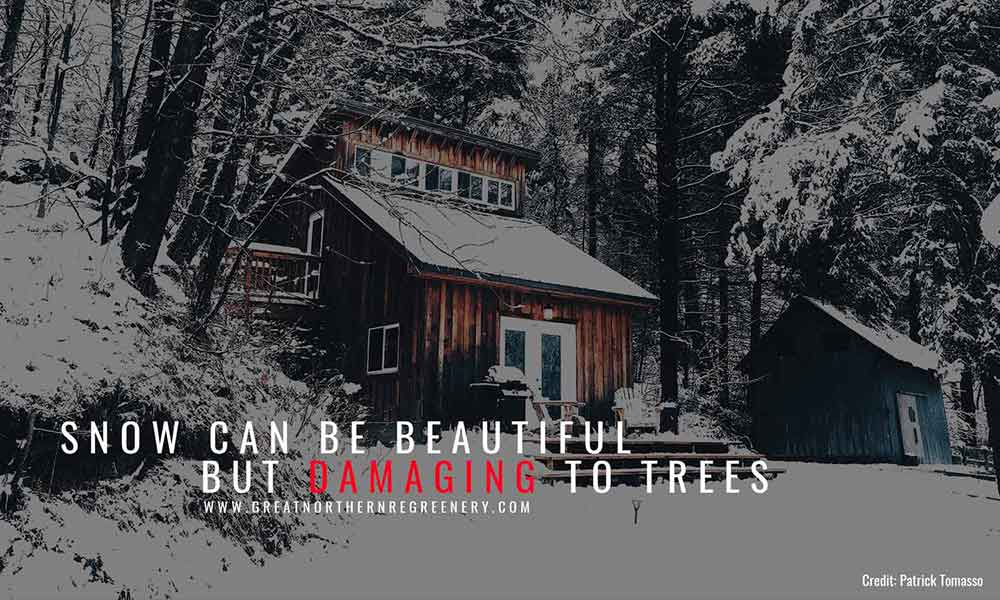
Even when the utmost care is taken to prepare trees for winter, extreme weather events can still have negative effects. Once temperatures start to rise, any damage will become more visible. Since prompt action reduces the likelihood of accelerated damage—either as a result of forthcoming weather events or simply due to increased strain—it’s essential to have trees inspected at regular intervals throughout the season. Assess tree damage as soon as possible after a storm to give your trees the best chance of survival, and in order to ascertain whether the services of a professional tree care company are needed.
In order to accurately determine storm-related damage, homeowners must know what to look for. Understanding the key elements that cause tree damage is an important first step.
Factors That Contribute to Tree Damage
Scan weather reports to anticipate any of these potential threats:
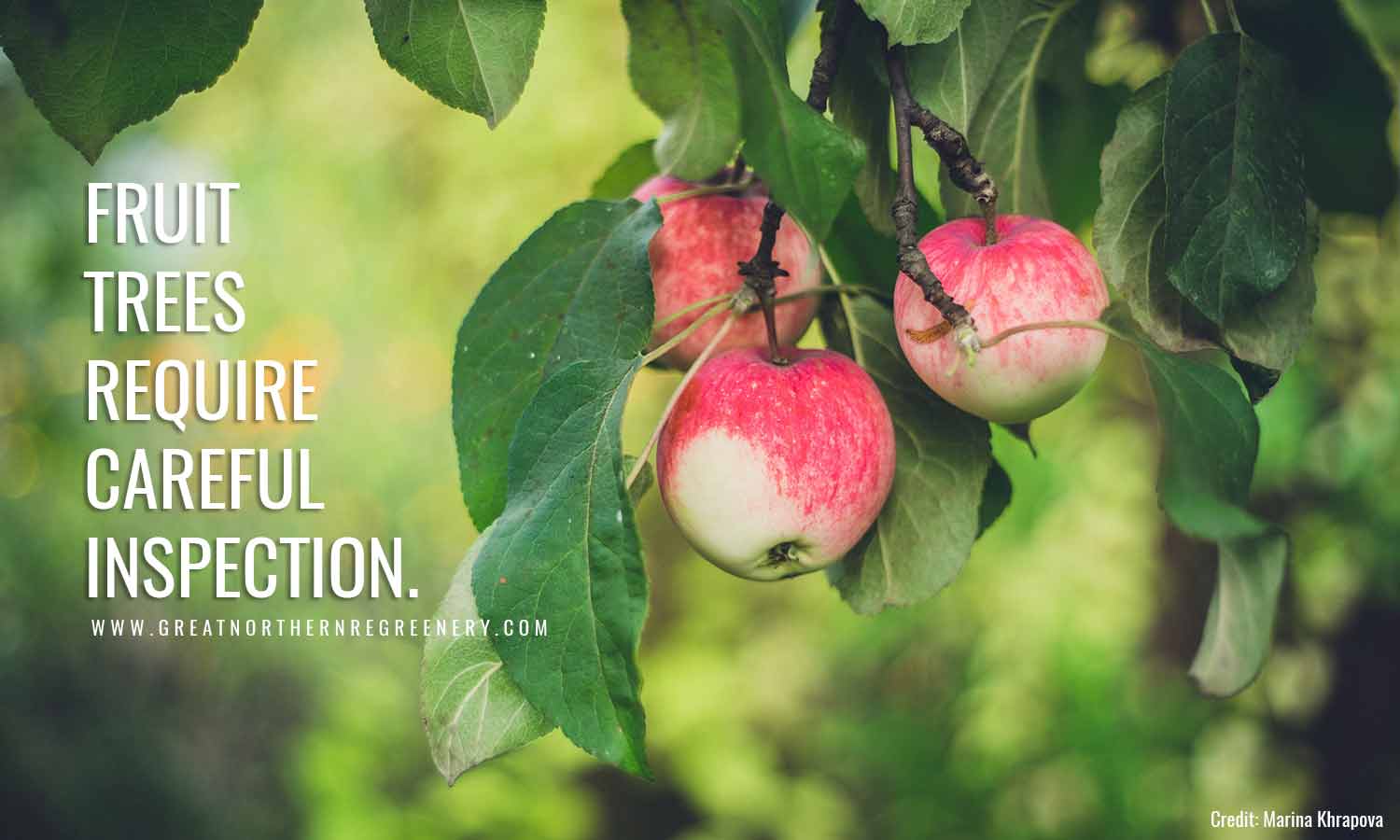
- High Winds
Not only can wind result in breakage or root damage — winter winds can also be extremely drying, particularly for fruit trees. Trees planted in open areas are especially susceptible. Though more common in summer, powerful downbursts can flatten groupings of young trees during a thunderstorm. Extremely strong winds can even cause a tree to twist and shift in unseen ways, damaging its interior.
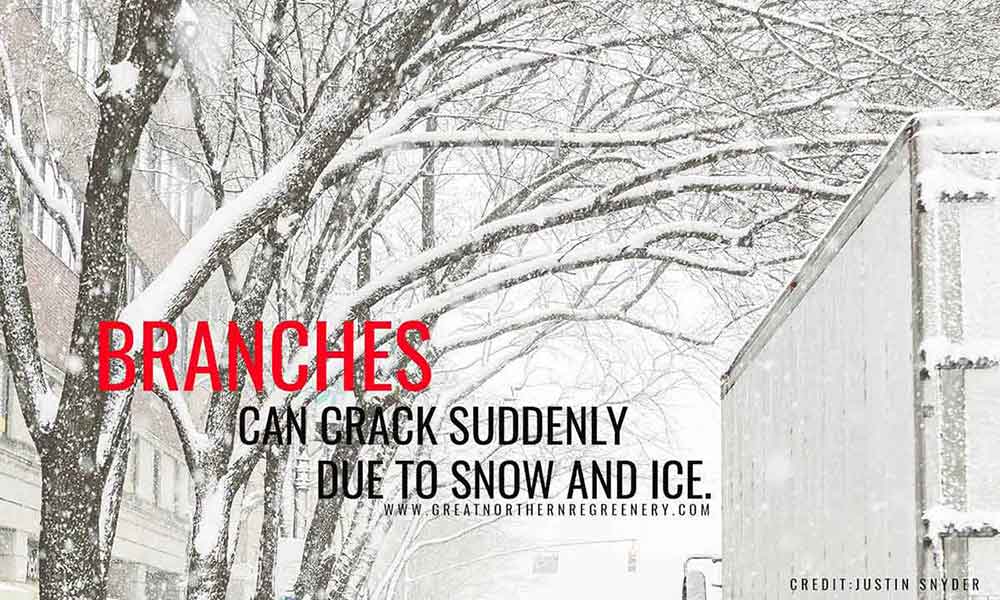
- Heavy Snow
Snow burdens branches, resulting in cracked or fallen limbs. Too much snow can even topple a tree. Birches and upright evergreens are among the most commonly affected species after a snowfall. - Freezing Rain
Rain can freeze once it hits the cold ground (or a cold tree). This ice accumulates on branches, growing thicker and thicker (in some cases up to 12 inches), and weighs down weak limbs and young trees in the process. If freezing rain follows a heavy snowfall, ice will form on top of snow-covered branches, forcing them to bear even more weight. - Sleet
These tiny pellets may look like snow, but they freeze into solid ice shortly after falling, particularly if the temperature rises slightly post-storm. This will weigh trees down, similar to the effect of freezing rain. Sleet will bounce off of objects and can cause harm. - Extreme Temperatures
The repetitive cycle of freezing and thawing causes soil to expand and contract. This is very hard on tree roots and can leave them exposed.
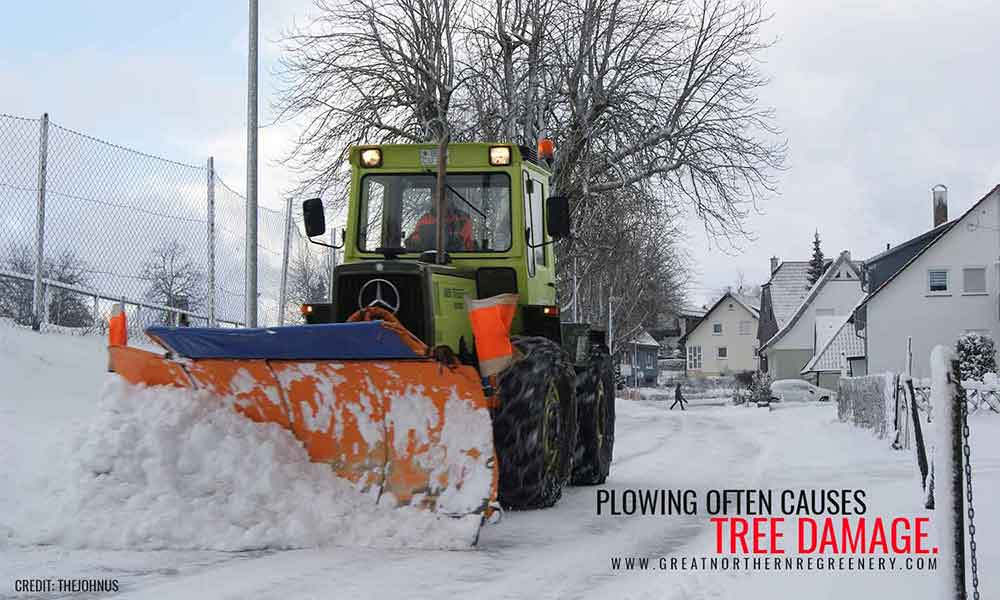
- Property Maintenance
Snow removal is a common cause of injury to young (or damaged) trees. Be cautious when using a compact tractor plow, since accidental impact can be devastating to a delicate sapling. Even if trees are not struck directly, plows can do harm by piling ice and snow against their base. Another man-made winter hazard is salt, commonly used on roads and sidewalks to reduce ice. Salt is harmful when it comes into contact with trees or shrubs, since the substance prevents the absorption of vital nutrients and moisture.
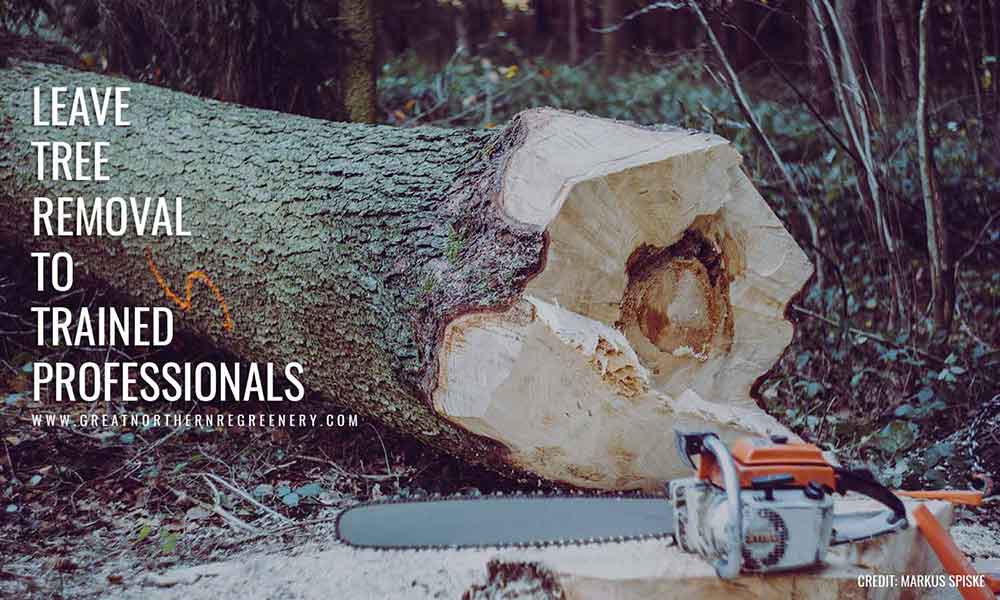
If your area is hit with extreme winds, sleet, heavy snow, or freezing rain, begin tree inspection as soon as it is safe to do so. Damaged trees threaten personal safety, as well as the safety of your animals, homes, and vehicles. Pay attention to trees that are in close proximity to structures. In some cases, cabling or bracing may be required to strengthen the tree’s trunk and keep a home’s inhabitants safe during severe storms. In more extreme instances, tree removal by an professional arborist may be necessary.
Regular tree inspection should be factored into your landscaping routine, since not all damage reveals itself immediately. Wind-related cracks may not be visible initially and can crop up in subsequent months as a result of interior twisting. The most severe storms can initiate damaging effects that may not be fully revealed until 15 years afterward, often in the form of root damage. If an unusually severe storm passes through, seek professional assistance to determine the severity of damage to your property. In most instances, homeowners can evaluate the condition of their trees by following a few key steps:
Key Signs of Tree Damage
Knowing what to look for makes all the difference.
- Leaning
A tree that lists to one side is likely to have sustained root damage. Be cautious if the tree is still coated in ice or snow, since the added weight can cause it to topple. - Breakage
Use caution when examining larger branches. Breakage may be one of the most obvious indications of damage, but it can also be difficult to detect in some cases. If branches are still covered with ice, they may be almost entirely detached but still adhering to the tree, ready to fall at any moment.
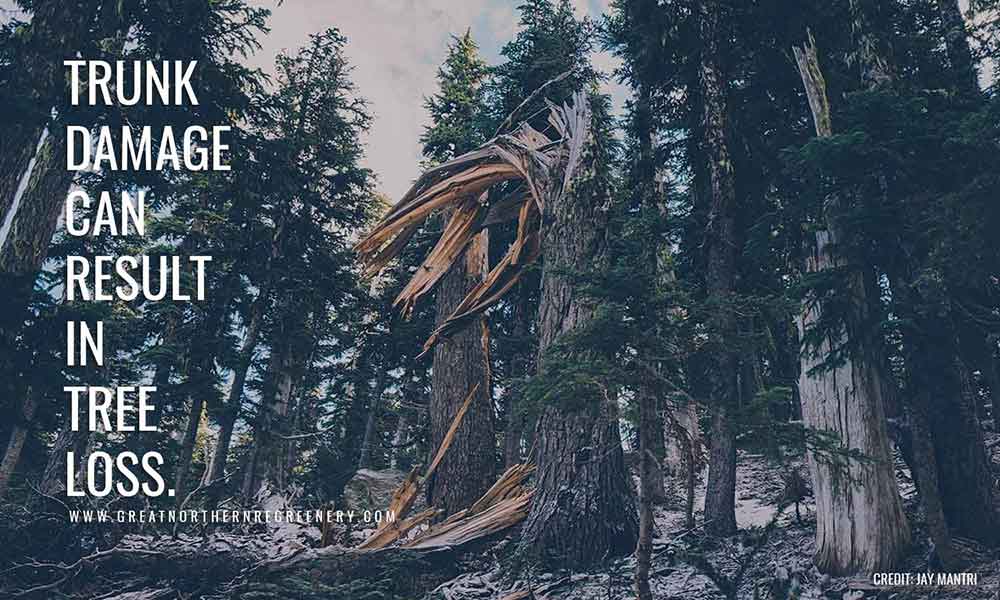
- Cracks and Splits
Again, these are not always immediately detectable. Examine the trunk for splits, particularly if a tree is leaning. Damage to a tree trunk can allow rot to settle in. - Permanently Bent Branches
The branches of a healthy tree should spring back into place after a heavy snowfall. If a branch remains bent, it likely indicates a crack somewhere within. Inspect any sagging branches in order to prevent further breakage. - Rot
Though it may not be caused by a storm, any rot that went undetected prior to the weather increases the chances of severe damage the next time a storm hits. If you detect rot—either before or after a storm—tree or limb removal may be necessary. - Pests
Trees are dormant during the winter, so a pest infestation is unlikely at this time of year. However, damaged trees will be more vulnerable to disease and insects once the weather starts to change, so homeowners will want to monitor trees in the coming months. Limiting (and treating) winter damage helps to fend off pests and disease come spring.
You will be able to assess damage more accurately if you’ve received expert advice prior to winter’s onset. This will give you a clear picture of your trees’ health, thereby enabling you to detect damage sooner after extreme weather. A trained arborist will also ensure proper steps are taken in advance to avoid serious damage in the first place; just as preparing your home and vehicle for winter will ultimately reduce stress and spending, so will preparing your trees.
Pruning is a vital step in tree preparation, particularly in exposed areas or anywhere regularly frequented by high winter winds. Young or weakened trees should receive the most attention, since healthy, well-protected trees have a good chance of surviving most storms. If you detect weather damage, rest assured that healthy trees will likely return to their original condition if at least half the tree remains unharmed and intact, and if damage is managed quickly and efficiently.
Proper care of trees following a storm is an essential part of landscape maintenance. A thorough assessment enables you to take steps to prevent additional damage from subsequent storms. Great Northern ReGreenery has a team of trained, certified arborists ready to help you evaluate the effects of a storm and prepare you for the next one. For expert tree services in York Region and Simcoe County, contact us at (905) 775-7444.





